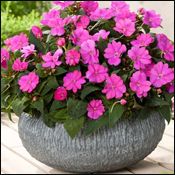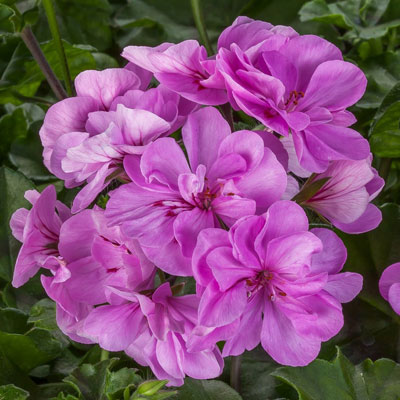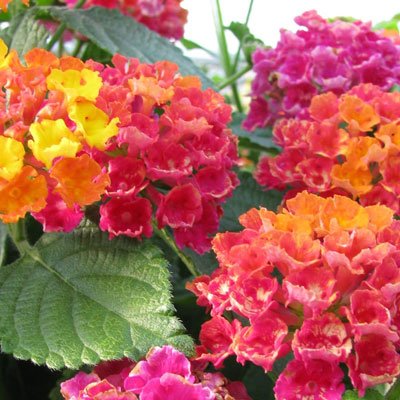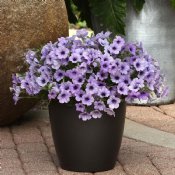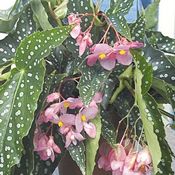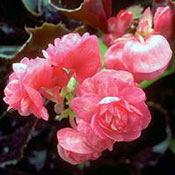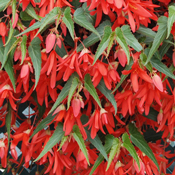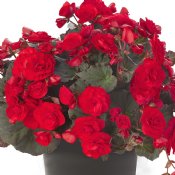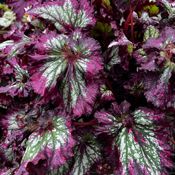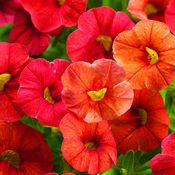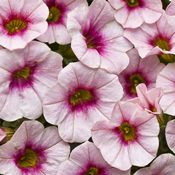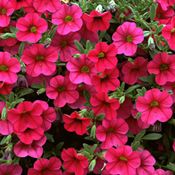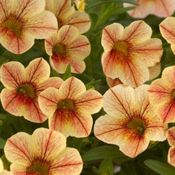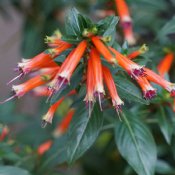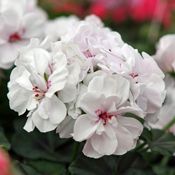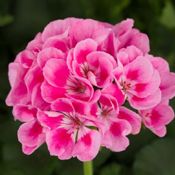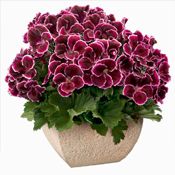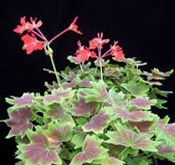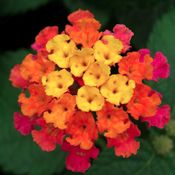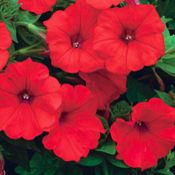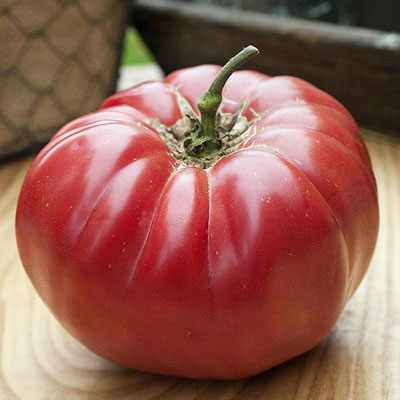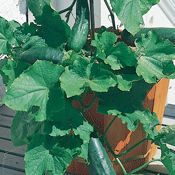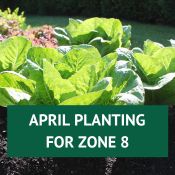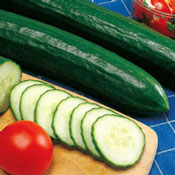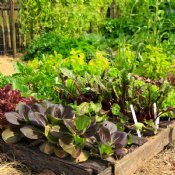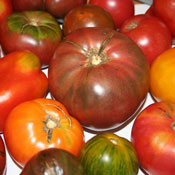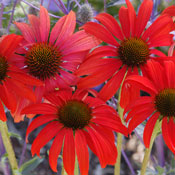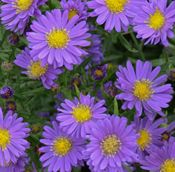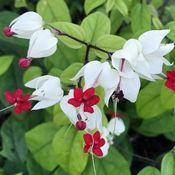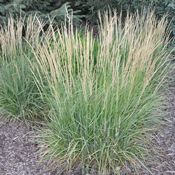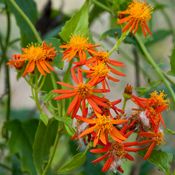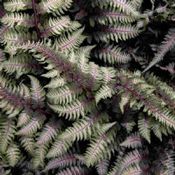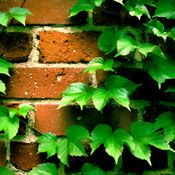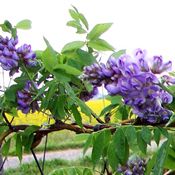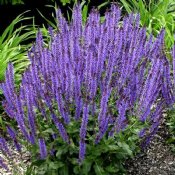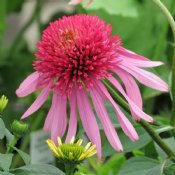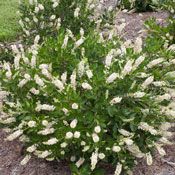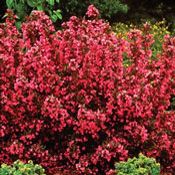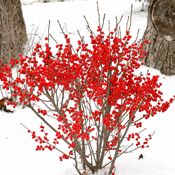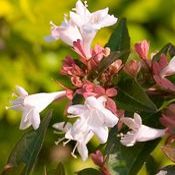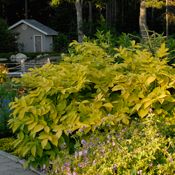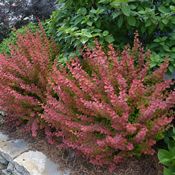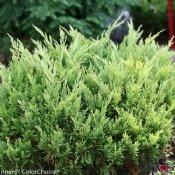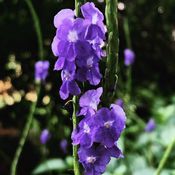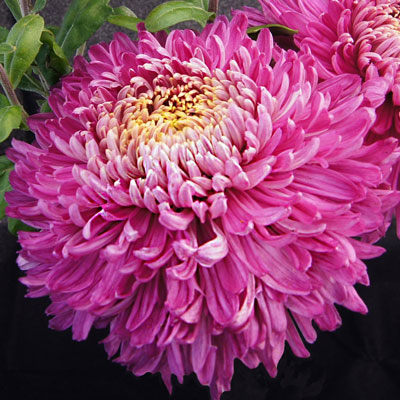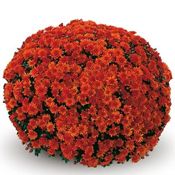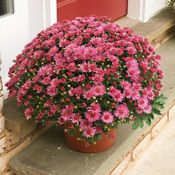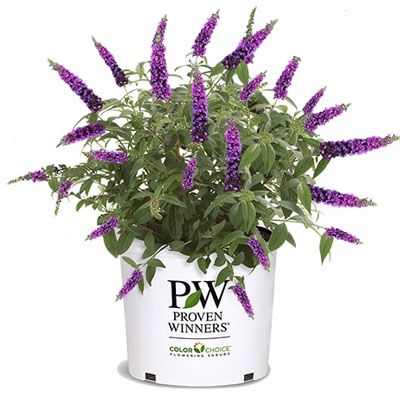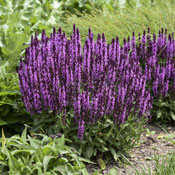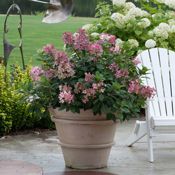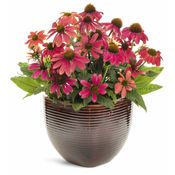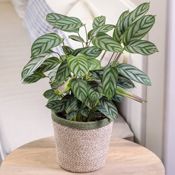
Tomatoes are the most widely grown vegetable in home gardens around the world. Thriving in warmth of summer, tomatoes can be grown successfully in both in garden plots and in pots on patios. They are usually the first vegetable plant that beginner gardeners grow, teachers even teaching their young charges how to grow tomato plants but what happens when you run into tomato plant problems? Everyone does at one time or another. Arm yourself by learning about the most common problems, what to look for, as well as suggested solutions, and get ready for your tomato growing season!
The 10 Most Common Tomato Plant Problems are:
Blossom-End Rot
Often called End Rot, Tomato Blossom End Rot or BER, this may be the most common tomato problem for home gardeners. It appears as a leathery, brownish area that is indented on the blossom end of the tomato, on the bottom. It can be anywhere from the size of a dime to about the size of a half dollar. Fluctuations in moisture levels combined with a calcium deficiency will usually result in BER. Providing consistent moisture to your tomato plants and mulching to maintain moisture levels will help. You should ensure that you have the proper amount of calcium for all of your garden plants, especially tomatoes. Lime is one of the biggest calcium boosters, though it will also raise your soil pH. Gypsum is another option that does not lower or raise soil pH; however, your tomato plants will absorb calcium best through their leaves, so a calcium-fortified foliar spray will act the quickest.
Tomato Skins Splitting or Cracking
This is one of the more unsightly tomato plant problems, though the tomatoes will still be edible. Cracking or splitting usually occurs because of sudden accelerated growth. It can happen due to a sudden increase in moisture after a dry period or may occur when the fruit is overripe. Providing consistent moisture and planting hybrid varieties that are less prone to cracking may solve, or completely eliminate, the problem. Cherry tomatoes are the most prolific sufferers of skin cracking or splitting. Picking them when they are just-right ripe, or almost ripe, just before a predicted rain storm, will often prevent cherry tomato varieties from cracking.
Tomato Hornworms
Are you seeing chewed up leaves or fruit that is still unripe but damaged? Start scouring your plants for tomato hornworms. They’re able to blend remarkably well with the leaves of your tomato plants, but once you see one you will wonder how in the world you ever missed seeing it to begin with. They are HUGE and one of the ugliest, mostly green, squishy, caterpillar-like things you’ll ever see—and yes, they do have a horn, though it protrudes from their rear, not their head. You can plant companion plants, such as marigolds, dill, or basil to discourage tomato hornworms, and to attract beneficial insects that will eat the eggs and larvae, such as Ladybugs, Parasitic Wasps, and Lacewings. You may have read that putting out bird feeders, bird baths, and bird houses to invite birds to your garden to eat the hornworms is a solution; be aware that wild birds WILL eat tomatoes too.
Yellow Leaves
If the leaves are uncurled and yellowing at the bottom of the plant, it may actually be a sign of the plant starting to die off at the end of the season. However, if it occurs while your plant is still actively blooming or early in the season, you may have a nitrogen deficiency, are overwatering, or underwatering. Yellow leaves can also be an early sign of other problems like a pest, fungus, or bacterium. Your first step should be to use a soil tester to determine if it is, in fact, a nitrogen deficiency, the easiest problem to fix. You can also have your soil tested at your local university extension office. If there is a nitrogen deficiency, use a nitrogen-rich supplement to increase the amount of nitrogen in your garden soil. You can practice some prevention by preparing your soil with quality organic material or compost before you plant. Earthworm castings are also a good organic source of additional nitrogen, as are earthworms themselves.
Late Blight
Late Blight is a serious fungal infection that can attack both tomato and potato plants, as well as eggplants and peppers. This blight develops as spots on the leaves or stems, with a brown, purplish, or gray appearance. Late Blight is actually a type of water mold and is normally present when the weather is very wet and the spores can travel long distances, infecting very large areas. Late Blight is what caused the Irish Potato Famine in the late 1840s. You can prevent Late Blight by rotating your crops every year, by drip watering at the soil level, and by maintaining good air circulation around your plants. If you think that you have Late Blight, remove all of the diseased stems, leaves, and fruit, throwing them away. You should not put them in the compost pile; burning is the best way to ensure the disease does not spread further. Burying, well away from your vegetable garden and flowers in the Nightshade family will also work. If your tomato plants are severely infected, you may have to dispose of all of your plants. If you think your plants are salvageable, you might try a Bonide Copper Dust or Spray; this solution can prevent, as well as control, Late Blight.
Early Blight
Early Blight is a common fungal disease, hearty enough to survive the winter on old tomato plants and then attack your new plants. The best prevention is to clean up old tomato plants when the season ends; then rotate your planting areas and space your plants according to recommendations to allow for good air circulation. Early Blight should not be confused with Late Blight, a much more deadly and destructive fungal infection. You will know it is Early Blight when you see blackish-brownish spots on tomato leaves, the leaves start to drop off, or you have “sunburned” fruit. If caught early, you can use Bonide Copper Dust or Spray.
Tomato Blossom Drop
This is especially easy to spot, as the tomato blossoms you are so excited about will just dry up and drop to the ground, before producing any fruit. There can be any number of issues that can cause Tomato Blossom Drop. (1) Cold temperatures. Tomatoes thrive with daytime temperatures between 70° and 85°F and with nighttime temps above 55°. Using row covers, a cold frame, or cloches to cover already planted young tomato plants when a cold snap is expected, may prevent blossom drop from occurring. (2) Excess heat and drought can also cause tomato blossoms to drop. You can provide temporary shade, in the form of a canopy, if your temperatures regularly exceed 90° or heavily mist your plants on hot, dry afternoons. (3) Though tomatoes self-pollinate, they need good air circulation and plenty of room between plants to ensure proper pollination. Improper pollination can cause Blossom End Rot. Shaking your plants gently to dislodge the pollen or using a small fan for a few hours daily may prevent this from happening. (4) Light Deficiency can also cause Tomato Blossom End Drop. If your tomato-planted area is shaded by trees or other obstructions for a good part of the day, your tomato plants are likely not getting enough sunlight. Tomatoes require 6 to 8 hours of direct sun daily. We could go on and on and…nutrient deficiencies, root damage, excessive fruit load, fluctuating moisture, and herbicide drifting from another area of application can all cause Tomato Blossom End Drop.
Shiny, Sticky & Deformed Leaves
This condition may be the result of aphids, whiteflies, or spider mites. Aphids are the most prolific; they suck the tomato plant sap and excrete a sticky substance on the leaves and fruit, tending to congregate either on the top growth or the undersides of the leaves. They’re small, dark, pear-shaped insects, the adults being about the size of a pinhead. Aphids are hard to control and can infest your entire garden in no time at all. Aphids only live about a month, but in that month can give birth to between 50 and 200, already pregnant babies (nymphs), who will give birth to their own pregnant nymphs within one week of birth. Amazingly, though most aphids are wingless, they can be born with wings when it is time to fly away to start a new colony elsewhere, either due to seasonal changes, or because they have damaged your plants so badly, there is no longer adequate food. There are predatory, beneficial insects that can rid you of aphids, such as damsel bugs, ladybugs, lacewings and parasitic wasps. You can plant a number of different plants in or near your garden to attract each of these helpful aphid-eaters.
Spider mites will cause bunches of small yellow specks and spin fine webs on the leaves, making them feel sticky. Spider mites are actually one of the worst pests known to infest houseplants, though have no problem living outdoors as well. They can barely be seen by someone with really good vision; they are about 1/50th of an inch. If you suspect spider mites, take a leaf and wipe it on white paper; they will appear as miniscule moving dots. As they are an arachnid, Food Grade Diatomaceous Earth (DE) will help alleviate the problem; just dust it on both indoor and/or outdoor plants. It is a super fine dust, so we recommend taking your houseplants outside briefly to apply the DE.
Whiteflies are closely related to aphids and not really a fly at all. Whiteflies prefer vegetables like brassicas, plants in the nightshade family, and sweet potatoes. If you happen to brush against the plant, they will fly up, though they almost look like dust. Whiteflies are fertile producers of other whiteflies; in just their short lifespan of 16 days, whitefly females can lay about 400 eggs. So, how do you deal with them? Keeping your tomato plants well-weeded will help, to some degree, but the most effective way to damage your whitefly population is with neem oil or an insecticidal soap made with a few drops of Castile soup in a quart spray bottle.
Fusarium and Verticillium Wilt
Both of these are caused by an incurable fungal infection. Once a plant has either one, you should dispose of the plant immediately. Be sure it goes in the garbage or that you burn it; do not add it to the compost pile. Fusarium Wilt is pretty much invisible, until the damage is well-advanced. This fungus lives in the soil and will form threads that will infect your tomato plants through its roots. causing yellowing leaves as it destroys the plant stems, making them collapse and rot. Verticillium Wilt is noticeable as yellowing that starts appearing on the lower leaves of your tomato plants and then will turn brown and necrotic, working its way up your plants. Both Fusarium and Verticillium Wilt cause vascular streaking of your tomato plant’s stem tissue and will usually be most prominent at the base of your tomato plants. The only way to avoid either of these is to select a hybrid variety that is resistant to wilt or to buy your plants from a very reputable grower. Almost without fail, these two types of wilt will occur in plants from a big box retailer that doesn’t specialize in gardening.
Nematodes
This insect is almost invisible. They live under the soil and cause the root of the plant to swell. The only sign will be stunted plants and discolored leaves. These microscopic eelworms are soil-born, so there is no “cure” for them. Your tomato plants will still bear edible fruit, though the volume and size of your tomatoes may be stunted. One of the most common fixes is to plant marigolds with your tomatoes. Killing Nematodes is not the only beneficial reason to plant marigolds; they also attract beneficial insects to fight other damaging pests in your garden. You might try “Nema-gone”, “Golden Guardian” or “Tangerine”. These solutions, among others, release a chemical into the soil that kills Nematodes.
We have grown tomatoes in our own gardens and had none of these problems on a good year and multiple problems on a bad year. We’ve learned that soil quality and paying a bit of daily attention to your tomato plants will yield the best crop. Take your cup of coffee or tea into the garden and just walk the rows; this is the best way to notice little problems before they become big ones!

